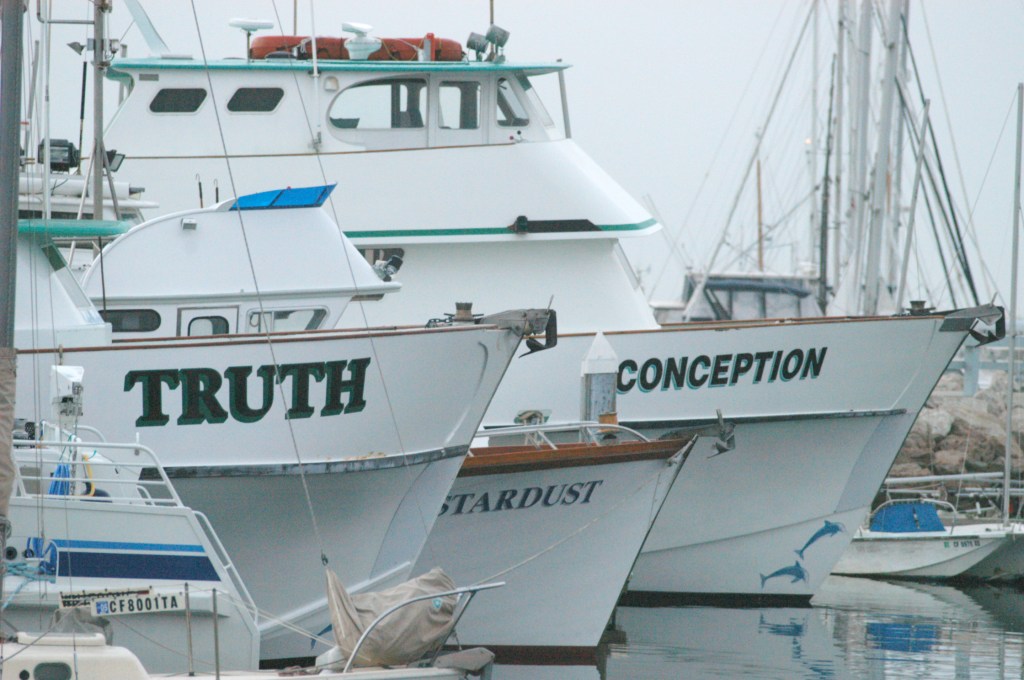House Holds Hearing on ‘Conception’ and Other Maritime Disasters
Santa Barbara Rep. Salud Carbajal Grills Coast Guard over Failure to Implement Safety Protocol

At a House hearing on Thursday, at which Santa Barbara Rep. Salud Carbajal held the Coast Guard’s feet to a very mild fire, the Conception and a number of other maritime disasters were part of a discussion on preventing boating deaths and increasing maritime safety. Acting chair, Rep. Sean Patrick Maloney (D-NY) said the Coast Guard may have made critical mistakes, citing the disconnect between its rules and NTSB findings in a Los Angeles Times article this week. The National Transportation Safety Board had pointed to poor preventive maintenance and lax fire prevention and crew training in “a string of maritime casualties,” he said, and had a history of taking action following a tragedy, rather than actively updating its regulations.
Among the other incidents described at the House Transportation and Infrastructure Committee hearing were the cargo ship El Faro, in which 33 crew died when its captain steamed into the path of a hurricane; the sinking of a “duck boat” in Missouri that killed 17; and sexual assaults on cruise ships.
After first acknowledging the many Coast Guard members in his district and thanking the service for its search-and-rescue work after the Conception caught fire and sank, killing 34 people on September 2, Carbajal used his five minutes to quiz Coast Guard Rear Admiral Richard Timme. Carbajal demanded to know why the maritime service’s track record was so poor in implementing NTSB recommendations. “Over the years, we’ve seen tragedy after tragedy after tragedy,” Carbajal said, in which NTSB advocacy for regular inspections, crew training, and other needs were ignored.
In the case of the Conception, said Timme, who is the assistant commandant for Prevention Policy, a chartered team looked immediately into the fire, the vessel, and what needed to change in the safety network for small passenger vessels. The Conception ran under “old T” safety rules, which grandfathered in vessels built before 1996, he said. If the NTSB found issues that had to do with the older construction standards, “We will look at that.” Earlier, he had told another committee member that if the old standard were a causal factor in the incidents, the Coast Guard would react with policies and rules. Ten days after the Conception disaster, the Coast Guard had issued a bulletin recommending vigilance in lithium-ion battery charging, reexamination of passenger berths, and emergency exits, among other suggestions.
The NTSB’s Brian Curtis, who directs its Office of Marine Safety, told Carbajal and the committee that they were looking at both the old and new subchapter T rules and whether they were adequate regarding means of escape, responsibility, and the like.
Among a second panel, Paul Sterbcow, an attorney and president of the Louisiana Association for Justice, urged an examination of the 1851 Limitation of Liability law, which was written when ships were made of wood and sailed the high seas with no means of communicating with their owners. It allows owners to limit damage claims to the value of the wrecked vessel, as long as none of their actions caused the wreck; the owners of the Conception filed such a claim three days after the ship burned to the waterline and sank. Nowadays, “If vessel owners know they can walk away without any liability, they have no incentive to make their vessel fit,” Sterbcow said. “What you’re really doing is protecting the insurance industry,” he claimed. “You need to limit the ability to limit liability.”
Sterbcow further argued that violations were encouraged by forced-arbitration clauses in employment-contract and passenger-vessel-boarding agreements. “All go to protect the wrongdoer,” he said, “and none of them protected those who died or were injured or their survivors.” He also advocated for wrongful-death claims, which were precluded by the Death on the High Seas Act, saying they should be allowed in incidents within 12 miles of shore. On Tuesday, the first wrongful death lawsuit in the Conception tragedy was filed by Christine Dignam, whose husband, John Dignam, died aboard the ship.
Among the members of the House Transportation and Infrastructure Committee, Bob Gibbs (R-OH) pointed out that Coast Guard duties had increased without any accompanying increase in funding. He pointed to the addition of ferries and towing vessels to the Coast Guard inspection rota, as well as new examinations required for fishing vessels. He was joined in that opinion by Don Young (R-AK), who said he’d been involved with the Coast Guard in Alaska for 60 years. “We’ve been giving them responsibilities but not the money to do the job.”




You must be logged in to post a comment.